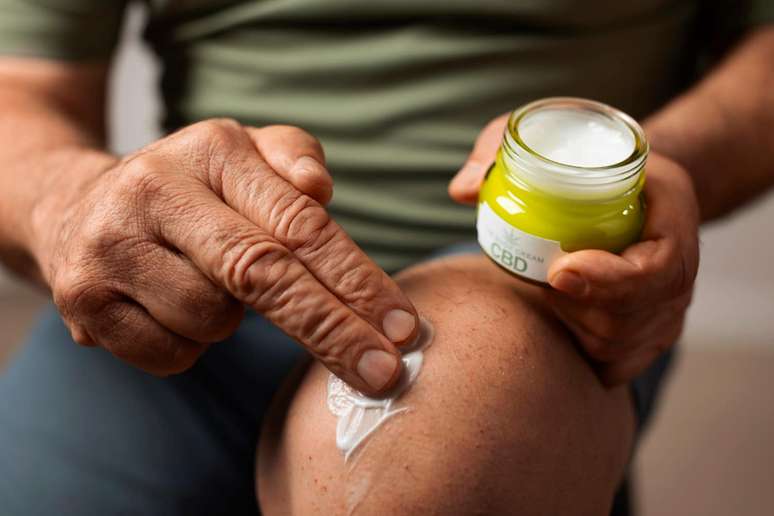Adequate food is important to prevent the condition of evolving type 2 diabetes
THE pre-diabetes It happens when the blood sugar level is higher than normal, but not enough to be considered diabetes Type 2. It is a sign that the body is already starting to have difficulty using insulin well, a hormone that helps to control blood sugar.
The good news is that at this stage there is still time to change habits and prevent the disease from advanced. And a healthy diet is a protagonist in this control. A study published in the magazine Nature He has shown that up to 70% of type 2 diabetes cases are connected to a poor diet.
Pre-diabetes understanding
The development of pre-diabetes is the result of the association between a genetic trend and behavioral factors, “as SuperVeppe and the presence of overweight and obesity”, describes Dr. Roy Lyra da Silva Filho, coordinator of the Department of Diabetes Mellito of the Brazilian company of the Brazilian company of the Brazilian company of the Brazilian company of the Brazilian company of Brazilian society. Endocrinology and metabology (Sbem).
This means that, most of the time, the condition develops over time due to unhealthy choices such as inappropriate diet and physical inactivity.
The genetic characteristics and weight gain, in particular of visceral fat, lead to greater body resistance to insulin, a hormone produced by the pancreas whose main function is to position glucose inside the cells to generate energy. If this sugar is not used, the damage begins.
In short, the body cannot produce insulin correctly and cells become more resistant to it. “It is worrying because it is characterized by the increase in risk for the future development of type 2 diabetes, as well as cardiovascular diseases,” explains Tarissa Petry, endocrinologist at the center specialized in obesity and diabetes of Oswaldo Cruz German Hospital.
First steps
Diagnosis of the condition, it is time to take care of food. “Diagnosis is an opportunity to change the eating habits with the gradual adoption of healthier practices,” says nutritionist Marice Marques, coordinator of the Department of Nutrition of the Brazilian Society of Diabetes (SBD). It summarizes that these habits should be focused on the diversity, the quality and balance of consumed foods.
There is no universal food strategy to prevent or slow down type 2 diabetes. Diets must be thought individually. Even so, some common ways can be traveled, such as identifying current food models, establish realistic objectives and plan meals and learn to read labels and make aware choices. The balanced diet, in turn, is recommended for everyone.
Foods indicated for those who have pre-diabetes
The endocrinologist Luciano Giaciaglia, coordinator of the SBD department of type 2 and pre-diabetes, indicates that it is important to follow a diet with the main macronutrients and micronutrients, such as fibers, vitamins and minerals.
In the diet, the fibers, in particular soluble, decrease the speed of digestion and absorption of food, making the glucose more slowly shot in the body. Consequently, in addition to collaborating with the control of blood sugar levels, they also last the feeling of satiety longer, reducing appetite.
According to the SBD guidelines, for people with pre-diabetes, The consumption of 25-30 grams of these nutrients per day is recommended. Therefore, in the list of what the person with the image should give priority are complex carbohydrates, who better retain their fibers. They are more present in Whole Foods, for example.
Others Fiber sources include fruit such as papaia and plum, cereals such as oats, barley and All-BranVegetables such as carrots and legumes such as beans and lentils.
In addition to taking care of the ingested foods, according to Giaciaglia, adequate hydration is also important, therefore water consumption should be stimulated during the day. The consumption of fruit, in turn, should be limited to two or three portions per day.
Good fat should enter the list
It is very common for people with type 2 diabetes or pre-diabetes to have an increase in blood pressure and changes in fat levels in blood circulation with triglycerides and high cholesterol. “Therefore, the diet should also contemplate these aspects,” warns Giaciaglia.
Fiber intake can also help in this photo while collaborating with the reduction of blood fat. In addition, SBD recommends: consider to give priority to the use of fatty acids (organic molecules Found in fat and oils) Mono and polyunsaturated type, as they are associated with the lower incidence of cardiovascular diseases. They are in food like olive oil, avocado AND Oil seeds like Castanhas nuts and almonds.
On the “opposite” side they are saturated fatty acids, which increase bad cholesterol. These are found in red meats, cheese, butter and coconut oil, as well as in some transformed foods.
“In pre-diabetes, most people already have a certain degree of compromise of the cardiovascular system,” says the doctor. Therefore, in the diet, it is worth keeping in mind that monounsaturated fatty acids help reduce serious and bad cholesterol. The polyunsaturated ones, in turn, include the Omega 3Essential for the development of the brain and eyes and Omega 6, important for metabolism and immunity.
What to avoid in food
According to Marlice, the main recommendation is to cut the consumption of ultra -elaborate foods and sugary drinks, an orientation valid for the entire population. In addition to these two groups, Giaciaglia recommends putting aside foods rich in trans fats and cholesterol, as well as, of course, sugar. Know more:
Ultra -elaborate
Ultra -elaborate foods are hyper -protected food products such as stuffed biscuits, sausages, sausages, ham and instant noodles. They usually contain high levels of sodium, saturated fats and preservatives.
A study conducted at the request of the ACT health promotion last year has shown that the The consumption of this type of product causes 57 thousand deaths And it costs over $ 10 billion per year in Brazil, due to the chronic diseases to which they are associated, including diabetes.
Sugary drinks
Another survey, conducted with over two million people and published by the American Diabetes Association magazine, revealed that an increase in daily consumption of sugary drinks, such as drinks and box juices, has been associated with a higher risk of 16% type 2 diabetes development.
Sugar
Sugar is quickly absorbed by the body, causing a sudden increase in blood sugar. This requires an immediate response of the body, usually with an insulin release. In people with pre-diabetes, this mechanism is already compromised and frequent blood sugar peaks can accelerate progression in type 2 diabetes. Therefore, it is important to avoid sugar in general, both in ready-to-ready drinks and in what is present in industrialized foods like biscuits.
Simple carbohydrates
The simple carbohydrates, such as those found in white flour bread, refined pasta and cakes, quickly transform into glucose in the body. Although they are not sweet like sugar, they have a similar effect on blood glucose, rapidly increasing blood glucose levels.
Red meat
According to Giaciaglia, it is also recommended to reduce (it is not necessary to eliminate) the intake of red and fat meat. The guide is supported by a study published in the magazine The Lancet Diabetes & Endocrinology Last year. In the analysis, which has accompanied millions of people of over 20 countries in 10 years, the daily consumption of 100 grams of red meat, equivalent to an average steak, was associated with a 10% increase in the risk of developing type 2 diabetes. Already in the case of transformed meats, such as bacon, ham and sausage, only 50 grams per day (about two slices of bacon or a sausage) to increase by 15%.
Calorie foods
In people with pre-diabetes and overweight or obesity, calorie restriction associated with physical activity, weight loss and reduced risk of developing type 2 diabetes is recommended.
Suggestions and replacements of menus
The study that evaluated the impact of the consumption of sugary drinks also stressed that the replacement of a daily portion of soda, for example, with water, coffee or unsweetened tea was associated with a reduction of up to 10% in the risks of diabetes. Therefore, this is one of Marlice’s recommendations. It also indicates the replacement of sugary drinks with fruit or water with lemon.
Other exchanges suggested by the nutritionist are: fried foods from grilled or roasted foods, spices ready for homemade spices and industrialized snacks by walnuts and seeds.
It is also important to replace simple carbohydrates with complexes, preferring whole foods. According to the nutritionist, a good menu should have fruit, vegetables, wholemeal foods and dairy products -caseari low fat.
Instead of red meat, it is good to increase the consumption of lean meat, in particular fish and, secondly, birds.
In some cases, the use of nutritional supplements such as substitutes for partial meals can be thought of as an adjuvant strategy for weight reduction.
In addition to the changes in the menu, Marlice also recommends maintaining a food frequency with snacks among the main meals to avoid exaggeration for lunch and dinner. This interval varies individually and depends on several factors, such as metabolism, the type of physical activity and individual objectives.
How is the complete treatment for pre-diabetes?
The change in the daily menu is the key treatment for pre-diabetes, basically based on behavioral modification. The change of lifestyle includes an adequate diet, weight loss and systematic physical activity.
Silva Filho mentions that there are studies indicating that people who adopt these measures intensely can reduce the risk of progression of the Council of up to 58%.
In some situations, drugs can be recommended. The remedies are indicated when, for example, the practice of exercise constantly for life, with maintenance of weight loss, is not possible for a patient. The most designed drug for this purpose is metformin, which helps to control blood sugar levels, but medicinal medicines can be used that help weight reduction.
In the end, if thinking about the diet, the list of exercises or drugs, “it is important to remember that the treatment should always be individualized and oriented by a healthcare profession”, says Tarissa.
Source: Terra
Ben Stock is a lifestyle journalist and author at Gossipify. He writes about topics such as health, wellness, travel, food and home decor. He provides practical advice and inspiration to improve well-being, keeps readers up to date with latest lifestyle news and trends, known for his engaging writing style, in-depth analysis and unique perspectives.







